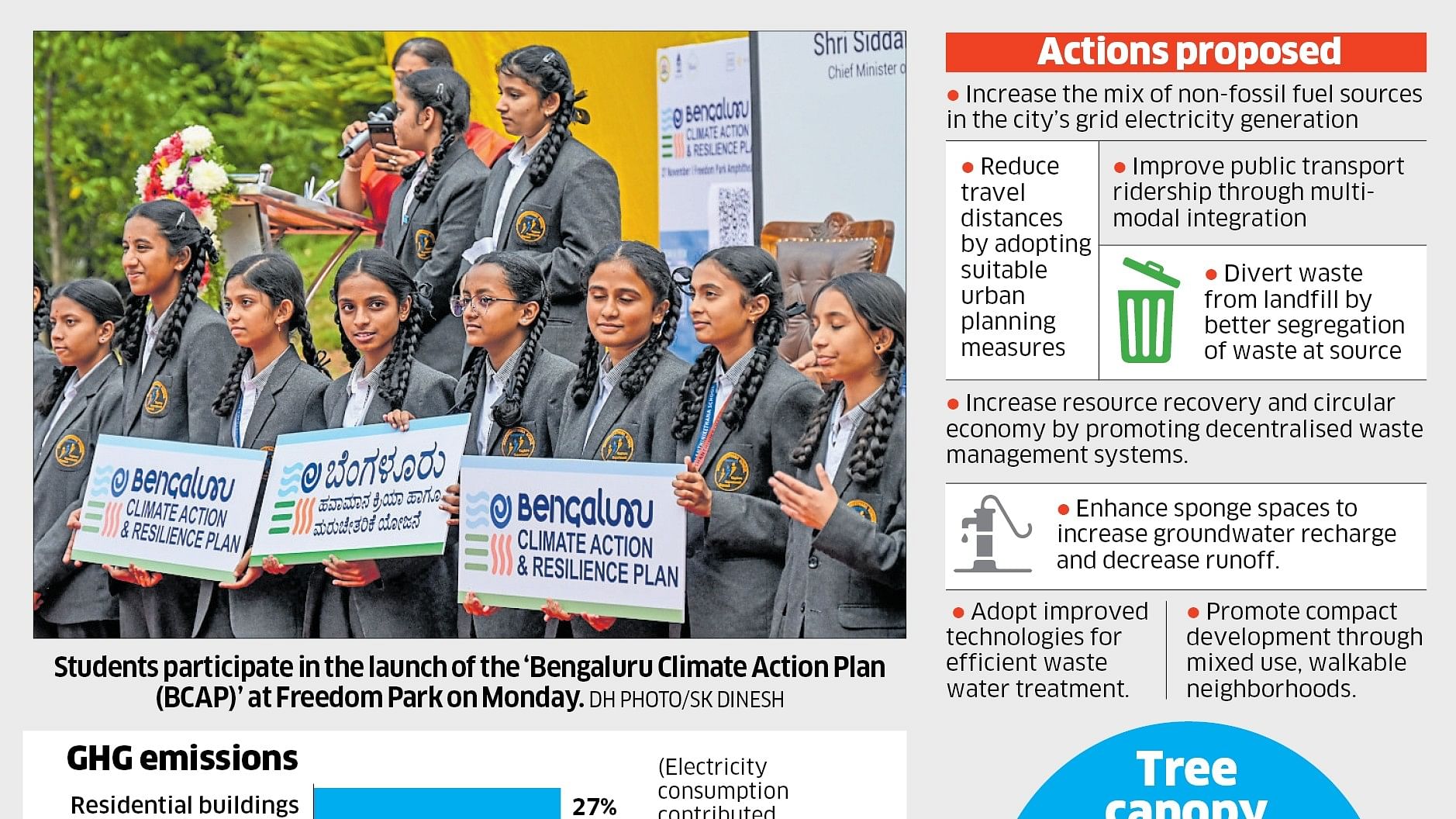
Students participate in the launch of the 'Bengaluru Climate Action Plan (BCAP)' at Freedom Park on Monday.
Credit: DH Photo/SK Dinesh
Bengaluru: A climate action cell will soon be set up in the Bruhat Bengaluru Mahanagara Palike (BBMP) to facilitate implementation of the Bengaluru Climate Action Plan (BCAP).
The BCAP, launched here on Monday, comprises 269 action points, and aims to achieve net-zero by 2050. Balancing the amount of Greenhouse Gas (GHG) emissions produced and the amount that is removed from the atmosphere is referred to as net-zero.
Announcing the formation of the special cell in the BBMP, Deputy Chief Minister DK Shivakumar, who holds Bengaluru Development portfolio, in a written message said: “We will allocate dedicated staff and resources to make this cell deliver results. It will work with all other stakeholders."
The city is the third in the country to have its own climate action plan, the first two being Mumbai and Chennai.
The BCAP was prepared by the BBMP in collaboration with its knowledge partners, C40 Cities and World resources Institute (WRI), India. While C40 cities is a global network of mayors representing leading cities that are united to confront the climate crisis, WRI is a global research organisation that aims to analyse and address environment and development challenges.
“Bengaluru has seen a 170% increase in its built footprint between 1990 and 2015. Along with this unprecedented growth, the city is also seeing increased Greenhouse Gas (GHG) emissions,” the plan report stated.
Some major strategies considered for achieving emission reduction targets include decarbonisation of the electricity grid, improvement in industrial energy efficiency, transition to electric cooking in both residential and commercial buildings, shift towards cleaner fuels by vehicles, and achieving 100% waste segregation and zero waste to landfill.
These actions, the report says, are aimed at reducing GHG emissions by 16% by 2030, 26% by 2040 and 56% by 2050 (as compared to the 2019 baseline).
The twin variables
For Bengaluru, rainfall and air temperature are the two major climate variables. One issue is grappling with extreme rainfall that often leads to flooding, and the second is the heat.
“This manifests itself into different climatic hazards,” the report stated. “In addition, air pollution, an associated anthropogenic environmental hazard, is impacting residents’ health and productivity.”
Besides the government intervention, the BCAP also sought the support of residents’ welfare associations, commercial establishments, and community-based organisations to push for reforms in different sectors such as water (conserve), waste (reuse and recycle), electricity (switch to energy-efficient appliances and install a solar power system), greening (plan native species) and transport (use public transport).